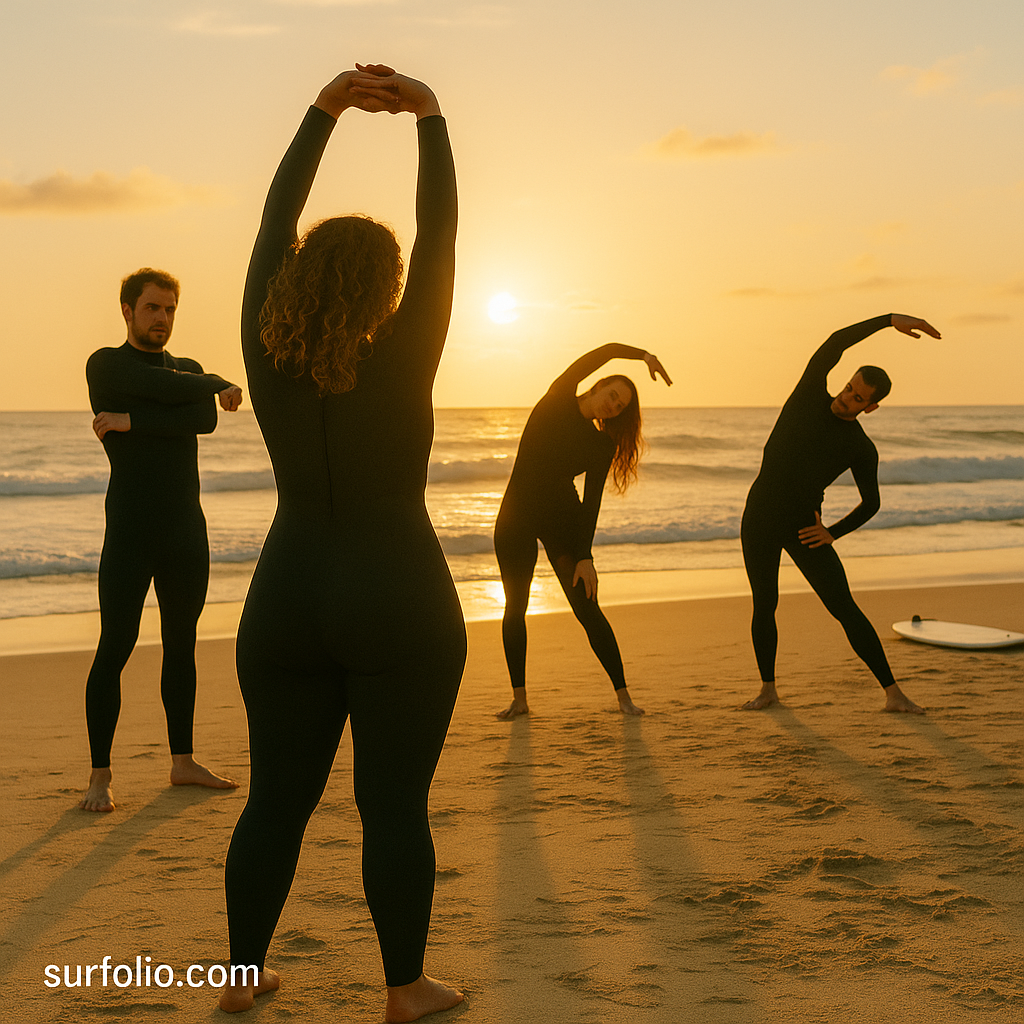
Why Land Training Matters for Surfers
Surfing looks effortless, but it’s one of the most physically demanding sports on the planet. Paddling, popping up, and maintaining balance all rely on a strong, flexible, and coordinated body.
Land-based training helps you build surf-specific strength while improving endurance and preventing injury. The key is to focus on functional movements that mimic surfing’s dynamic flow.
1. Pop-Up Push-Ups
Muscles worked: Chest, triceps, shoulders, core
This exercise strengthens the muscles you use when popping up on a board. Start in a plank position, lower your chest, then explosively push up and bring your knees under your chest — simulating the pop-up movement.
Pro tip: Try “burpee-style” variations for speed and precision.
2. Balance Board Training
Muscles worked: Core, legs, stabilizers
Balance boards or Bosu balls improve control and proprioception (body awareness). Practice gentle shifts, squats, or one-leg holds to simulate the feeling of staying centered on a moving surfboard.
Pro tip: Combine with resistance bands for added challenge.
3. Resistance Band Paddling
Muscles worked: Lats, shoulders, back, arms
Attach a resistance band to a fixed point and mimic the paddling motion. Keep your core engaged and maintain a steady rhythm — it builds endurance for longer sessions and keeps your shoulders paddle-ready.
Pro tip: Use light tension for longer sets (2–3 minutes) to simulate real surf sessions.
4. Surfer Lunges with Rotation
Muscles worked: Legs, glutes, core, obliques
Perform forward lunges and twist your torso toward the front leg. This trains the rotational power needed for carving and turns while improving lower-body stability.
Pro tip: Add a medicine ball or light weight for resistance.
5. Plank to Side Rotation
Muscles worked: Core, shoulders, obliques
Hold a plank, then rotate your torso into a side plank, raising one arm. This builds balance, control, and rotational strength — all critical for staying stable through maneuvers.
Pro tip: Move slowly to maintain perfect form and balance.
6. Squats and Jump Squats
Muscles worked: Quads, glutes, calves, core
Strong legs are essential for generating power in turns and staying low on the board. Squats build stability; jump squats train explosive movement for quick takeoffs and snaps.
Pro tip: Focus on smooth landings — soft knees and steady balance.
7. Yoga for Flexibility and Focus
Benefits: Mobility, breathing, recovery
Surf yoga improves range of motion in the hips, spine, and shoulders while centering your mind before big sessions. Poses like Downward Dog, Warrior II, and Pigeon Pose release tightness and enhance balance.
Pro tip: Try a 15-minute flow after surfing to stretch and recover faster.
8. Core Stability Circuit
Your core connects every surf movement. Combine planks, Russian twists, and leg raises for a strong, stable base. A powerful core helps maintain balance and generates torque during turns.
Weekly Surf Fitness Plan Example
| Day | Focus | Example Exercises |
|---|---|---|
| Mon | Strength | Pop-up push-ups, squats, band paddling |
| Tue | Balance | Balance board drills, plank rotations |
| Wed | Mobility | Yoga flow or dynamic stretching |
| Thu | Endurance | Resistance circuits or cardio sprints |
| Fri | Core | Planks, leg raises, mountain climbers |
| Sat | Surf or Active Recovery | Light surf session or yoga |
| Sun | Rest | Stretching and hydration |
Final Thoughts
Surf fitness is about building a body that moves with the ocean, not against it. Whether you’re a beginner learning to pop up or an advanced surfer improving power turns, these land workouts help you perform longer, recover faster, and stay connected to your board with every wave.
